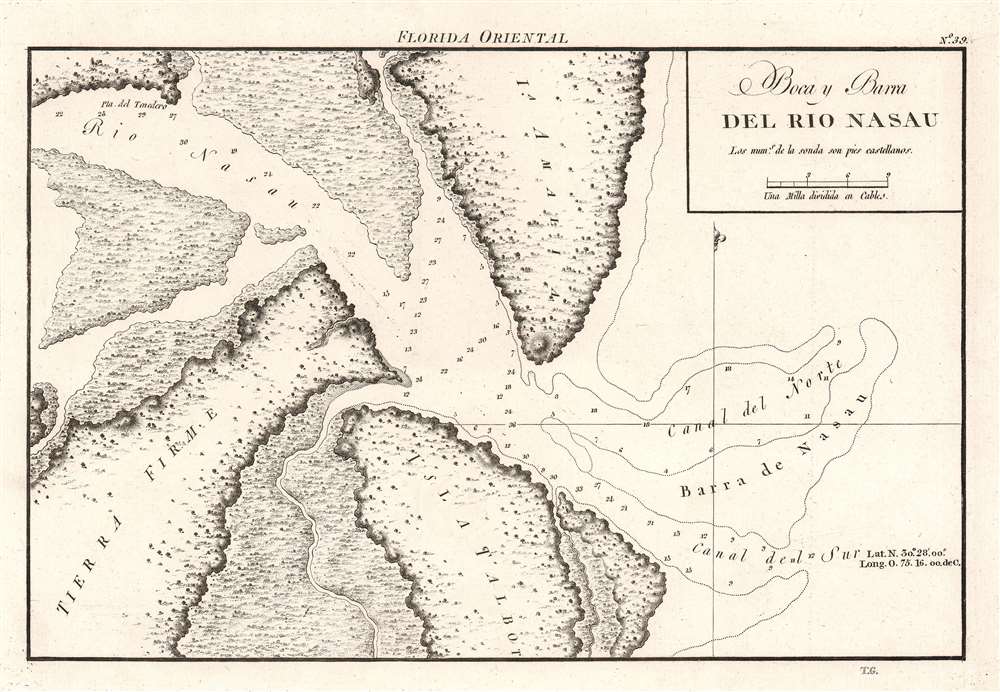1809 Dirección de Hidrografía Map of the Mouth of the Nassau River, Florida
BocaBarraRioNasau-hidrografia-1809
Title
1809 (undated) 7.25 x 10.75 in (18.415 x 27.305 cm) 1 : 55000
Description
Publication History and Census
This 1809 map was engraved by Tomás González and issued as plate thirty-seven in the Portulano de la America Setentrional, published by the Dirección de Hidrografía. We note a single cataloged example of the separate map, which is part of the collection of the Touchton Map Library at the Tampa Bay History Center. Nine examples of the complete atlas are cataloged in OCLC in collections worldwide.CartographerS
The Direccion Hidrografía (1787 - 1927), also known as the Deposito Hydrografico and the Direction de Hidrografía, was the Spanish equivalent of the British Admiralty or the U.S. Coast Survey. This organization, founded in 1787, was commissioned to collect and produce accurate nautical charts of all waters frequented by Spanish vessels. In essence, it replaced the Casa de la Contratación de las Indias (House of Trade of the Indies), which closed its doors in 1790. Like most such organizations, the Direccion Hidrografía marked a new age in cartography. Rather than simply collect charts created by navigators, explorers, and merchants, the Direccion Hidrografía worked closely with naval and military personnel to mount cartographic and hydrographic expeditions in pursuit of the most accurate hydrographical, astronomical, and geodetic measurements. The Direccion Hidrografía created a massive library of nautical charts that, though not nearly as common as similar nautical charts by the U.S. Coast Survey and British Admiralty, are highly desirable for the beauty of their manufacture as well as their accuracy and detail. The office was originally located on Calle Ballesta, but relocated to 36 Alcala, both in Madrid. After 1908 the Dirección was subsumed into other governmental agencies. In 1927 the Direccion was absorbed into the Institute and Observatory of San Fernando, located in Cadiz. The library of original maps, charts, and journals was transferred to the Naval Museum of Madrid - where it resides to this day. More by this mapmaker...
Tomás González (fl. c. 1809 - c. 1832) was a Spanish engraver active with the Dirección de Hidrografía in the early 19th century. Very few references appear to González appear in the historical record. It appears he was sent to Paris in 1802 to learn lithographic printing. Learn More...

